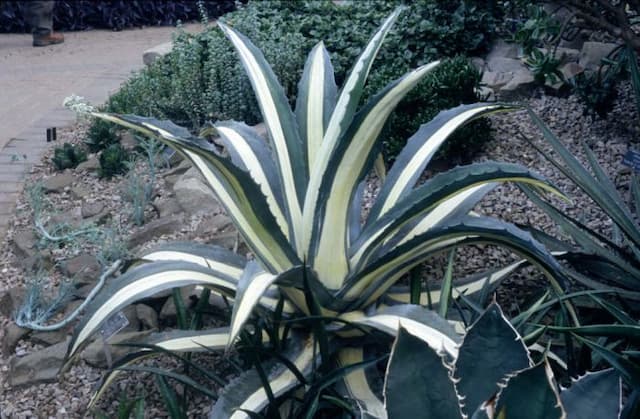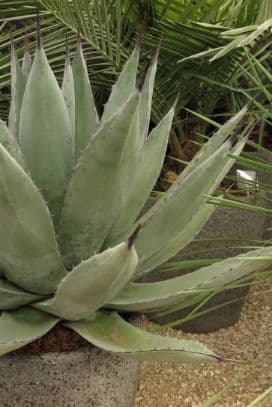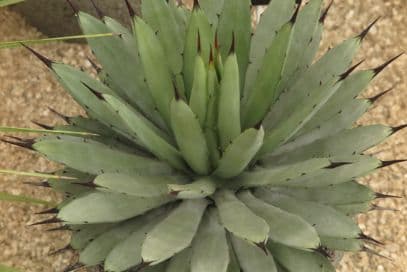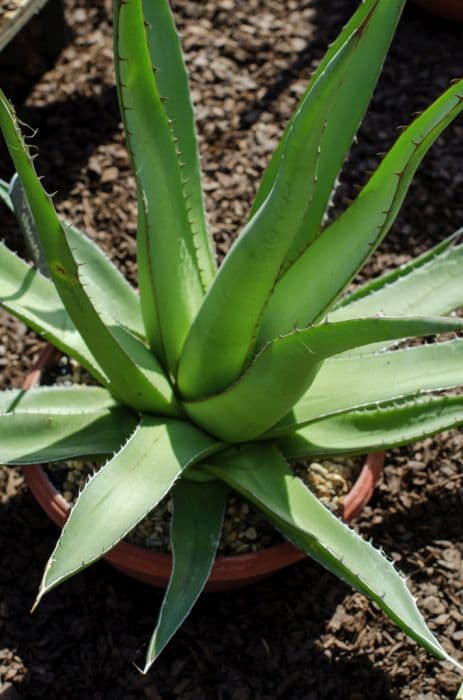Nelson's Slime Lily Albuca nelsonii

ABOUT
Albuca nelsonii, commonly known as Nelson's Slime Lily, is a perennial plant with a distinctive and attractive appearance. Its foliage consists of glossy green, fleshy leaves that form a dense rosette at the base. These leaves can have a wavy or curly edge, adding to the plant's visual interest. The most striking feature of the Nelson's Slime Lily is its flowers, which bloom on tall, slender flower stalks that rise above the foliage. The flowers are a creamy yellow hue and are characterized by an intriguing green stripe running along the center of each petal. The blossoms are bell-shaped, dangling at the tips of the flowering stalk, and have a unique, fringed look because of the presence of long, thin filaments that extend from each flower's center. These filaments give the flowers a somewhat shaggy appearance. In addition to its leaves and flowers, the Nelson's Slime Lily typically has a bulb at its base, which is hidden underground. This bulb stores energy and nutrients, allowing the plant to survive periods when it is not actively growing. Overall, Nelson's Slime Lily is admired for the exotic charm of its curling leaves and the delicate yet showy nature of its unusual flowers.
About this plant
 Names
NamesFamily
Asparagaceae.
Synonyms
Nelson's Slime Lily, Candelabra Plant, Nelson’s Albuca.
Common names
Ornithogalum nelsonii, Albuca major, Ornithogalum longebracteatum.
 Toxicity
ToxicityTo humans
Albuca nelsonii, commonly known as Nelson's Slime Lily, is not widely reported to be toxic to humans. However, as with many plants, it is generally advised to avoid ingestion as they are not meant for human consumption and could potentially cause mild stomach upset or an allergic reaction in sensitive individuals.
To pets
Nelson's Slime Lily is not specifically documented to be toxic to pets. However, as with any plant, it is best to prevent pets from ingesting it. If a pet does consume any part of the plant, they could potentially experience gastrointestinal discomfort or an allergic reaction. Keep an eye on your pet for any signs of distress, and consult a veterinarian if you observe any unusual symptoms.
 Characteristics
CharacteristicsLife cycle
Perennials
Foliage type
Deciduous
Color of leaves
Green
Flower color
Yellow
Height
1-2 feet (0.3-0.6 meters)
Spread
1-2 feet (0.3-0.6 meters)
Plant type
Bulb
Hardiness zones
8
Native area
South Africa
Benefits
 General Benefits
General Benefits- Ornamental value: Albuca nelsonii, commonly known as Nelson's Slime Lily, adds aesthetic appeal to gardens and homes with its striking green foliage and unique, nodding yellow flowers.
- Drought tolerance: This plant is native to South Africa and is adapted to dry conditions, making it suitable for water-wise gardening and reducing the need for frequent watering.
- Low maintenance: Nelson's Slime Lily requires minimal care beyond basic watering and occasional feeding, making it ideal for busy gardeners or those new to plant care.
- Resiliency: The plant is known to be resistant to many common garden pests, reducing the need for chemical pesticides.
- Attracts pollinators: The flowers produce nectar that can attract bees and other beneficial insects, supporting local ecosystems and biodiversity.
- Adaptability: Albuca nelsonii can be grown in a variety of soil types and environmental conditions, making it a versatile choice for different garden settings.
- Seasonal interest: It typically blooms in the spring, providing seasonal interest and a splash of color when many other plants are not yet in bloom.
 Medical Properties
Medical PropertiesThis plant is not used for medical purposes.
 Air-purifying Qualities
Air-purifying QualitiesThis plant is not specifically known for air purifying qualities.
 Other Uses
Other Uses- Ornamental Gardening: Albuca nelsonii is often used as an ornamental plant due to its striking spiral leaves and tall flower spikes, which make a dramatic statement in garden beds or as a centerpiece in containers.
- Flower Arrangement Accent: The unique, yellow-green flowers on tall stems are sometimes used in floral arrangements to add a touch of whimsy and an architectural element.
- Educational Tool: In botanical studies, this plant can be used to illustrate bulb growth and morphology to students or plant enthusiasts.
- Photography Subjects: With its distinctive foliage and flowers, Albuca nelsonii can be an interesting subject for botanical photographers and hobbyists seeking to expand their portfolio.
- Collector's Item: It may be collected by succulent and rare plant enthusiasts who prize unusual species and cultivars.
- Xeriscaping: Being drought-tolerant, Albuca nelsonii is suitable for xeriscapes or dry gardens, contributing to water conservation efforts.
- Erosion Control: Its root system can help stabilize soil in areas prone to erosion, although this is not its primary use.
- Thematic Landscapes: Albuca nelsonii can be used in thematic gardens, such as Mediterranean or African-themed landscapes, due to its origin.
- Gifting: Due to its unique appearance, Albuca nelsonii can be given as a gift to plant enthusiasts who appreciate exotic or unique plants.
- Green Roofs: Albuca nelsonii's ability to tolerate dry conditions makes it suitable for green roof installations where weight and water retention considerations are important.
Interesting Facts
 Feng Shui
Feng ShuiThe Albuca nelsonii, also known as Nelson's Slime Lily, is not used in Feng Shui practice.
 Zodiac Sign Compitability
Zodiac Sign CompitabilityThe Nelson's Slime Lily is not used in astrology practice.
 Plant Symbolism
Plant Symbolism- Resilience: Albuca nelsonii, also known as Nelson's Slime Lily, often grows in rocky or sandy soil, showing its capacity to thrive in challenging conditions.
- Rarity and uniqueness: With its peculiar corkscrew leaves and striking flowers, the Nelson's Slime Lily symbolizes individuality and the beauty of being unique.
- Adaptability: This plant's ability to adapt to its environment signifies flexibility and the importance of adjusting to life's circumstances.
 Water
WaterThe Nelson's Slime Lily should be watered once every 1-2 weeks, depending on the humidity and temperature conditions. The soil should be allowed to dry out slightly between waterings. When watering, it's best to provide a thorough drench so that the water reaches the entire root system; this could be around 8-16 ounces depending on the size of the pot and plant. During the dormant winter period, reduce watering frequency to once a month or less, just enough to prevent the soil from completely drying out.
 Light
LightNelson's Slime Lily thrives in bright, indirect sunlight. The ideal spot would be near a window that receives plenty of light but is shielded from direct afternoon sun, which can scorch the leaves. East or west-facing windows are typically the best locations.
 Temperature
TemperatureNelson's Slime Lily prefers temperatures between 50°F and 75°F, which are ideal for its growth. It can survive minimum temperatures of about 40°F, but it's important to avoid exposure to frost. Maximum temperature should not exceed 80°F to prevent heat stress.
 Pruning
PruningPrune the Nelson's Slime Lily to remove yellow or dead leaves to maintain its appearance and health. Pruning can be done as needed throughout the year, but it's best done in spring or early summer before new growth begins.
 Cleaning
CleaningAs needed
 Soil
SoilNelson's Slime Lily prefers a well-draining soil mix consisting of two parts potting soil to one part sandy or gritty material to ensure proper drainage. Maintain soil pH between 6.0 and 8.0 for optimal growth.
 Repotting
RepottingNelson's Slime Lily typically requires repotting every two to three years or when it has outgrown its current pot. Repot during the dormant period for best results.
 Humidity & Misting
Humidity & MistingNelson's Slime Lily thrives in moderate humidity levels, but does not require high humidity; average indoor humidity conditions are usually sufficient for this plant.
 Suitable locations
Suitable locationsIndoor
Place in bright, indirect light and water sparingly.
Outdoor
Full sun to partial shade, shelter from harsh elements.
Hardiness zone
9-11 USDA
 Life cycle
Life cycleAlbuca nelsonii, commonly known as Nelson's Slime Lily, starts its life cycle as a bulb, which remains dormant underground during the hot and dry season. Upon the arrival of cooler and wetter conditions, typically in autumn, the bulb breaks dormancy and sprouts, producing strap-like leaves and a flower stalk. The stalk then blooms, displaying unique greenish-yellow flowers with fringed petals, often in the late winter to spring. After pollination, usually by insects, the flowers develop into seed capsules, which eventually dry and release seeds into the surrounding environment. Once the seeds germinate, given appropriate conditions, they grow into new bulbs, completing the life cycle. Throughout the growing season, the plant stores energy in the bulb to survive the next dormant period.
 Propogation
PropogationPropogation time
Spring to Summer
Albuca nelsonii, commonly known as Nelson's Slime Lily, is best propagated through division, which is typically done in the late summer or early fall when the plant is not actively growing. To propagate by division, carefully unearth the bulb clusters and gently separate them into individual bulbs, ensuring that each new section has at least one growth point. These separated bulbs can then be immediately replanted at the same depth they were growing at previously, which is usually about 3 to 5 inches (7.6 to 12.7 centimeters) deep, in well-draining soil with some added organic matter to provide nutrients. Water the newly planted bulbs sparingly until new growth is evident to prevent rot. This method allows for the rapid increase of plants while preserving the characteristics of the parent plant.









